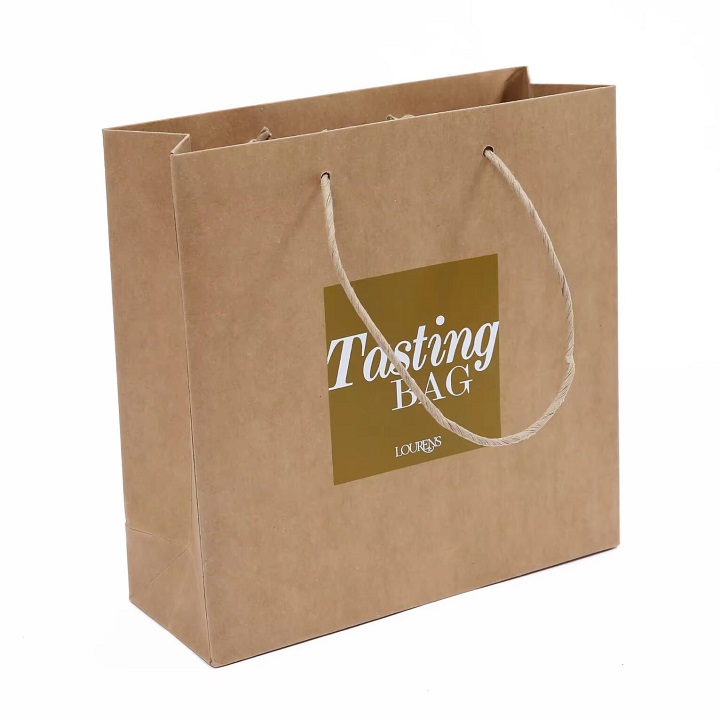Content Menu
● What Are Kraft Paper Bags?
● Environmental Benefits of Kraft Paper Bags
● Types of Kraft Paper Bags
● Advantages of Kraft Paper Bags
● Disadvantages of Kraft Paper Bags
● Innovations in Kraft Paper Bags
● Market Trends and Future Prospects
● Case Studies of Successful Adoption
● Conclusion
● Frequently Asked Questions
In recent years, the world has witnessed a significant shift towards sustainable and eco-friendly packaging solutions. Among these, kraft paper bags have emerged as a popular choice due to their durability, versatility, and environmental benefits. Made from wood pulp, these bags are not only biodegradable and recyclable but also offer a strong and durable packaging option for various industries.
What Are Kraft Paper Bags?
Kraft paper bags are made from kraft paper, which is produced through the kraft process. This process involves treating wood pulp with sodium hydroxide and sodium sulfide to break down lignin, resulting in a strong and durable material. The term "kraft" comes from the German word for "strong," reflecting the paper's robust nature.

Environmental Benefits of Kraft Paper Bags
One of the most significant advantages of kraft paper bags is their minimal environmental impact. Unlike plastic bags, which can take centuries to decompose and contribute significantly to pollution, kraft paper bags are biodegradable and recyclable. This feature is particularly important for businesses aiming to reduce their ecological footprint and appeal to eco-conscious consumers.
Types of Kraft Paper Bags
Kraft paper bags come in various types, each designed for specific uses:
Kraft Paper Bag with Twisted Handle: Ideal for industries like fashion, food, and medicine, these bags have handles made of twisted paper for added strength.
Kraft Paper Bag with Straight Handle: These bags have handles made from the same material as the bag itself, making them more decorative and suitable for lighter items.
Kraft Paper Bag Without a Handle: Often used for food products like bread and pastries, these bags are versatile and can be customized for different needs.
Advantages of Kraft Paper Bags
Biodegradability and Recyclability: Kraft paper bags decompose naturally and can be recycled multiple times, reducing landfill waste.
Strength and Durability: Despite their lightweight appearance, these bags are strong and capable of carrying substantial weight without tearing.
Versatility: They can be used for a variety of purposes, from groceries to gift-giving, and come in different sizes and styles.
Customization: Kraft paper bags can be customized with logos and designs, making them a valuable branding tool for businesses.
Eco-Friendly Production: The production process is more energy and resource-efficient compared to plastic bags, using less water and energy.

Disadvantages of Kraft Paper Bags
Water Sensitivity: Kraft paper is susceptible to water damage, which can weaken the bag and reduce its load-bearing capacity.
Cost: Generally, kraft paper bags are more expensive than plastic bags, reflecting their eco-friendly benefits.
Innovations in Kraft Paper Bags
To address some of the limitations of traditional kraft paper bags, innovations such as laminating or coating with natural materials like beeswax or plant-based waxes have been introduced. These enhancements improve water resistance without compromising the bag's eco-friendly nature.
Market Trends and Future Prospects
The demand for kraft paper bags is expected to rise as governments worldwide implement stricter regulations on single-use plastics. This shift towards sustainable packaging solutions presents opportunities for businesses to innovate and expand their product lines.
Case Studies of Successful Adoption
Several companies have successfully integrated kraft paper bags into their packaging strategies:
Fashion Retailers: Many fashion brands use kraft paper bags as an eco-friendly alternative for packaging clothing and accessories.
Food Industry: Restaurants and bakeries often use kraft paper bags for take-out orders, reducing plastic waste and enhancing brand image.

Conclusion
Kraft paper bags represent a significant step towards sustainable packaging. Their biodegradability, recyclability, and strength make them an ideal choice for businesses seeking to reduce their environmental impact. As consumers increasingly prioritize eco-friendly products, the demand for kraft paper bags is likely to grow.
Frequently Asked Questions
What are kraft paper bags made from?
Kraft paper bags are made from wood pulp processed through the kraft method, resulting in a strong and durable material.
Are kraft paper bags biodegradable?
Yes, kraft paper bags are biodegradable and can decompose naturally, leaving minimal environmental impact.
Can kraft paper bags be recycled?
Yes, kraft paper bags are fully recyclable and can be reused multiple times.
What are the disadvantages of using kraft paper bags?
The main disadvantages include water sensitivity and higher production costs compared to plastic bags.
How long do kraft paper bags take to decompose?
Kraft paper bags can decompose in about 4-6 weeks under the right conditions.
Can kraft paper bags be customized?
Yes, kraft paper bags can be customized with logos, designs, and different handle styles to suit various branding needs.
Are there any innovations to improve kraft paper bags?
Yes, innovations like laminating or coating with natural materials have been introduced to enhance water resistance.
What is driving the demand for kraft paper bags?
The demand is driven by consumer preference for eco-friendly products and government regulations against single-use plastics.
How do kraft paper bags impact branding?
Kraft paper bags can enhance a brand's image by showcasing its commitment to sustainability and eco-friendliness.
Can kraft paper bags be used for heavy items?
Yes, kraft paper bags are strong and can be used for carrying substantial weight, but their capacity may vary depending on the specific type and size.
































